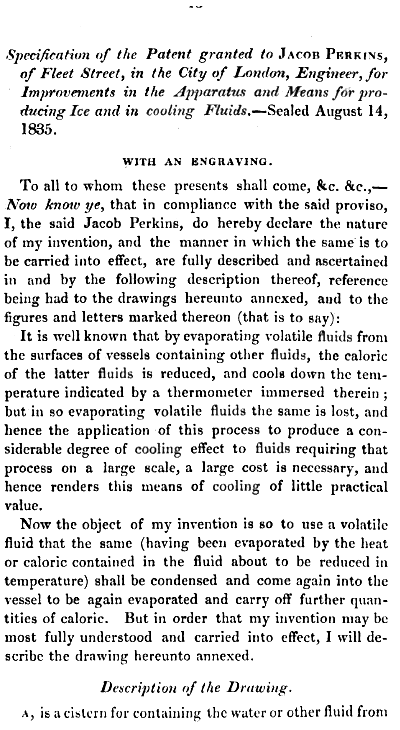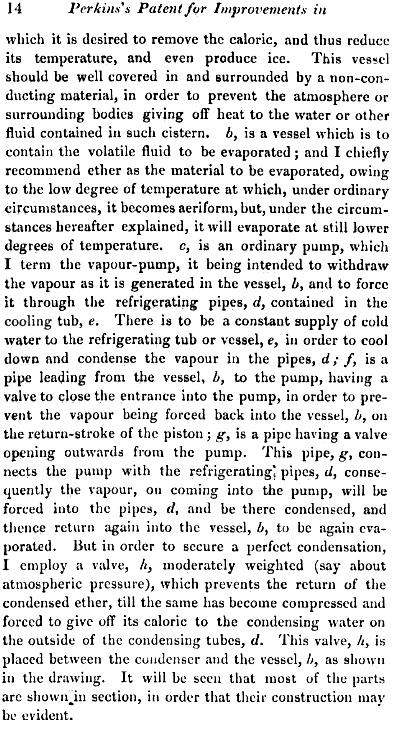The first practical refrigeration device was built by American Jacob Perkins, who was working in England at the time. It was based partly on undeveloped ideas that Oliver Evans wrote of in the early 1800s.
The device was patented on 14 August 1834 as “Apparatus and means for producing ice, cooling fluids”.
Fundamentally, it was remarkably similar to a modern refrigerator: a volatile fluid in a closed circuit of a compressor, a condenser, a throttle, and an evaporator. The fluid used was ether. It had been known for at least a century before this that the evaporation of volatile fluids had a cooling effect: the trick was getting this to work in a sustained cycle.
The model that Perkins built used a hand-driven piston.


